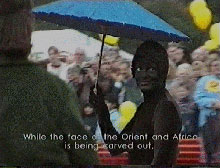|
|
|
Adam Chodzko
Design for a Carnival
9/9/2004 - 9/10/2004
Hito Steyerl
Vangelis Vlahos
Group exhibition
21/10/2004 - 20/11/2004
Corrina Peipon
Nina Papaconstantinou
con(text)ure
and a presentation of the publication Gagarin
9/12/2004 - 13/1/2005
Despina Isaïa
Hatice Güleryüz
Group exhibition
20/1/2005 - 19/2/2005
Adam Chodzko, Alan Michael,
Corrina Peipon, Jason Middlebrook, Katja Strunz, Nayia Frangouli,
Vangelis Vlahos
The Armory Show
11-14/3/2005
Piers 90 & 92, booth 92-132
New York
Accrochage with the gallery artists
23/3/2005 - 23/4/2005
Nayia Frangouli
The Misuse of Plans
21/5/2005 - 25/6/2005
|
Vangelis Vlahos combines models with photographs and archival materials. At the centre is the Athens Tower, the first skyscraper built in the International Style during the reign of the junta. The six models represent various stages in the design, laying bare the various discussions that accompanied each step towards the final choice. Just as the arguments nowadays surrounding the destiny of Ground Zero in New York reveal a lot about the nation's psyche, the concerns back then were not purely practical. Equally important was the symbolic power of a building that was definitely going to be in the public's eye. After a first presentation at Manifesta 5 this summer in San Sebastian, Spain, the artist now continues his research, turning towards the inside of the building. Did the occupants over the years indeed reflect the character the owners were seeking? The Athens Tower was designed for commercial purposes and the lists of tenants, which the artist sampled by copying one month taken out of seven different years in between 1974 to 2004, expose their changing composition that in turn results from shifting political and economical circumstances. The black-and-white photographs of the Tower and the U.S. Embassy have been taken from difficult angles, reflecting the distorted view experienced by Athenians.

*
Architecture and its impact on society, the social and political consequences of the use of public space are also at the centre of a film by Berlin based filmmaker and author Hito Steyerl. 'The Empty Centre' follows the development of the Potzdamer Platz in Berlin after the fall of the wall in 1989. Not only does it relate the implications of the takeover by multinational companies for the original habitants of the square, many of them immigrants, it also digs deeper into the history of the city and its enduring uneasy relationship with foreigners. Whereas foreigners help to shape the identity of the city they are recurrently excluded from public life. Hito Steyerl reveals the ongoing underlying tension by technical means, overlapping frames of her own video recordings with original footage from belle epoque newsreels. The many layers provide the viewer with an insight into the complexity of the matter: the narrator quotes from early 20th century cultural critic Siegfried Kracauer's writings on Nazism, immigrants and German workers take turns to vent their feelings, while in the background music can be heard from Felix Mendelssohn, a 19th century German born composer from Jewish background who was denied a passport of Berlin citizenship. 'The Empty Centre' is a one hour long film, which will be shown on a continuous basis.

|